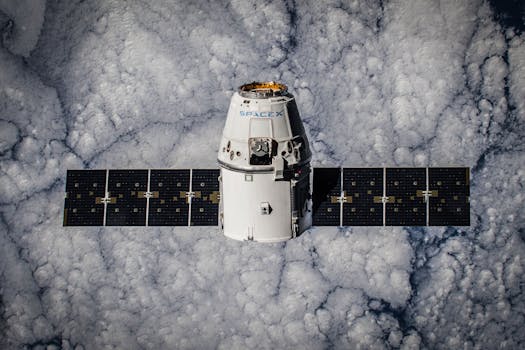The Future of Satellites: Advancements and Applications

The future of satellites is a rapidly evolving field, with new technologies and applications being developed at an unprecedented rate. As we look to the future, it is clear that satellites will play an increasingly important role in our daily lives, from enabling global communications to monitoring the health of our planet. Future of satellites is an exciting and rapidly developing field, and in this article, we will explore some of the key advancements and applications that are shaping the industry.
One of the most significant advancements in satellite technology is the development of small satellites, also known as CubeSats. These tiny satellites, which are typically around the size of a shoebox, are much cheaper to build and launch than traditional satellites, making them an attractive option for companies and organizations looking to get into the satellite business. Small satellites are being used for a variety of applications, including Earth observation, communications, and scientific research.
In addition to small satellites, there are also several other exciting developments in the field of satellite technology. For example, the development of reusable rockets, such as those being built by SpaceX and Blue Origin, is expected to significantly reduce the cost of launching satellites into space. This, in turn, is expected to make it more feasible for companies to launch large constellations of satellites, which could be used to provide global internet coverage or to monitor the environment.
Satellite Communications
Satellite communications is one of the most established and widespread applications of satellite technology. Satellites are used to transmit data, voice, and video signals around the world, and are an essential part of modern telecommunications. The future of satellite communications is expected to be shaped by the development of new technologies, such as high-throughput satellites and satellite constellations.
High-throughput satellites, such as those being built by companies like ViaSat and Hughes Network Systems, are designed to provide fast and reliable internet connectivity to users around the world. These satellites use advanced technologies, such as Ka-band and Ku-band frequencies, to provide high-speed internet access to users in remote or underserved areas. Satellite constellations, on the other hand, are networks of satellites that work together to provide global coverage and connectivity.
Earth Observation
Earth observation is another important application of satellite technology. Satellites are used to monitor the health of our planet, tracking changes in the environment, weather patterns, and natural disasters. The future of Earth observation is expected to be shaped by the development of new technologies, such as synthetic aperture radar and hyperspectral imaging.
Synthetic aperture radar (SAR) is a technology that uses radar pulses to create high-resolution images of the Earth’s surface. SAR satellites, such as those being built by companies like ICEYE and Capella Space, are able to penetrate clouds and darkness, making them ideal for monitoring the environment and tracking changes in the weather. Hyperspectral imaging, on the other hand, is a technology that uses special cameras to capture detailed images of the Earth’s surface in multiple spectral bands.
Conclusion
In conclusion, the future of satellites is a rapidly evolving field, with new technologies and applications being developed at an unprecedented rate. From satellite communications to Earth observation, the future of satellites is expected to revolutionize various industries and improve our daily lives. As we look to the future, it is clear that satellites will play an increasingly important role in shaping our world and addressing some of the biggest challenges facing our planet.
References
For more information on the future of satellites, please refer to the following sources: NASA, Satellite Industry Association, European Space Agency


